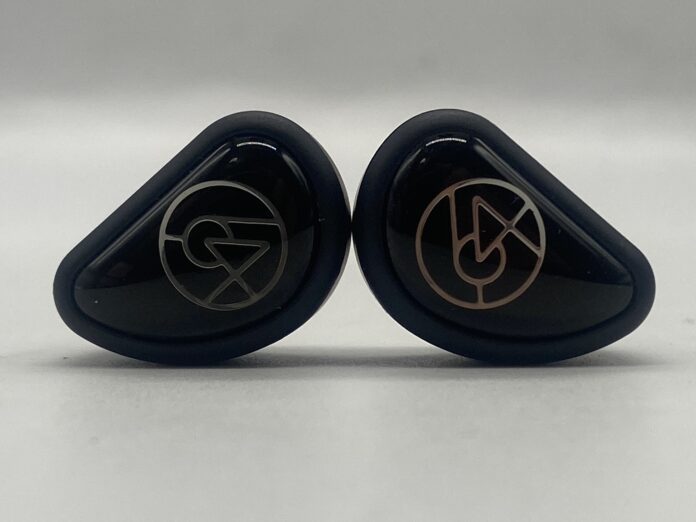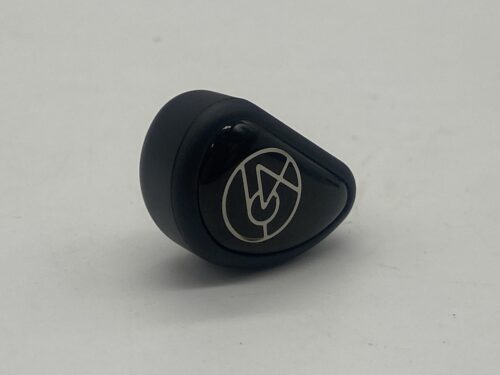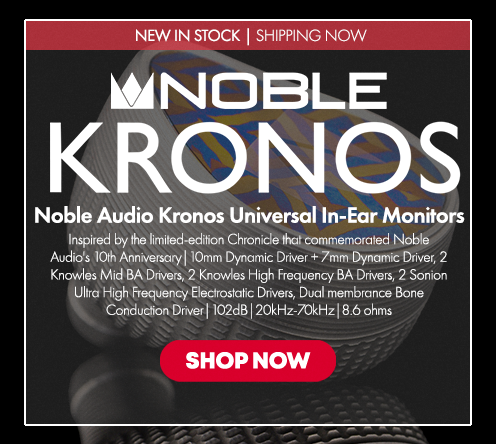64 Audio has put out some of the best IEMs over the years. Their output has always been for the high-end crowd, but this time they’ve released a product that teeters right on the edge of premium and mid-fi. The new Aspire 4 goes for $899, which is their least expensive pair of IEMs in years. It’s mainly made for musicians and studio professionals, so let’s see how it holds up.
What You Get
- Carry Case
- Foam + Silicone Ear Tips
- IPX Cable
- Cleaning Tool
- 1/4″ Adapter
- Shirt Clip
Look & Feel
Since the Aspire 4 doesn’t use any APEX model like many other 64 Audio do, the whole shell can be used for its faceplate artwork. The Aspire 4 doesn’t go or anything flashy though, despite the bigger surface area given to them. Everything about this aesthetic tells you that the Aspire isn’t in the same class as 64 Audio’s premium tier, not even the U4s or U6T. While the Aspire 4 doesn’t need to be flashy, this is also reflected in the shell, which doesn’t use the same aluminum material that other 64 Audio IEMs do. It takes more inspiration from their custom models, which don’t feature the same quality of shell.
Design
The Aspire 4 has a hybrid driver configuration. It utilizes one dynamic driver and 3 balanced armatures that all relegate different areas of frequency. With its proprietary IPX cable, you should be able to drive the Aspire 4 from any 3.5mm headphone output.
Soundstage
While you can tell there’s a ton of depth given to the instruments, the Aspire 4 surprisingly doesn’t span that wide. All of the sound elements are displayed in a collective bubble that exudes more tallness than width. The layering and spatial separation of the imaging save it from being a jumbled mess though, as the Aspire 4 maintains a semi-holographic presentation. However, it can become distracting when the left and right channels aren’t as strongly defined as they usually are with 64 Audio IEMs. Knowing what 64 Audio is capable of makes the centered imaging more apparent to me. You still get some great height though, as different instruments and effects stack on each other articulatly. It’s also easy to tell what instruments are placed in front of others, even if there’s very little movement to the imaging overall.
Low End
Bass instruments resonate super smoothly on the Aspire. Everything about its timbre is super elegant and clean. While it may not vibrate as extensively as you might like, the lows are still incredibly transparent. The frequencies have just enough gain to enact a tight buzz on bass guitars, driving them deep into your jawline. It strikes a great balance between flavor and natural resonance. This allows for a very dynamic bass response that will help satisfy most tastes. When the Aspire 4 displays this much realism in its low end, it’s hard not to be engrossed by its character.
Mids
If the goal of the Aspire 4 is to be a reference for musicians and studio professionals, then the midrange will tell you that the most. There are very few notches in the mids, as the frequency response remains mostly flat. The low mids and fundamental frequencies are the most in balance with each other, but the response seems to dip slightly before taking a sharp elevation in the upper mids. This gives you defined notes that can also be a bit shouty. It’s not a consistent feeling though, as the mids still have room to breathe. It comes down to the type of vocals you’re listening to. Sometimes they come through smoothly, and other times the tone can heat up quite significantly.
Highs
After the sharpness in the upper mids, the treble takes on a stronger emphasis. At its best, the treble can be quite striking, accentuating the clicking of instruments. This is great regarding transparency, but sometimes the timbre can get a bit over-brightened. The highs show good control for the most part, but certain frequency bands leak out and create some sharp peaks. This isn’t a consistent characteristic of the highs, but it’s significant enough to make note of.
Summary
While I’m glad 64 Audio has a new sub-thousand-dollar option, the Aspire 4 is limited in its ability. The sound signature has the excellent transparency that you expect from 64 Audio, but some listeners will be deterred by some of its high frequencies and limited width. It also doesn’t help that the cable is proprietary, but if you use their custom IEMs this shouldn’t be that big of a dealbreaker. For strict critical listening and monitoring, the Aspire 4 should work as it should, but outside of that, I would wait to save up for some of their more high-end models.
| Pros | Cons |
|
|
The 64 Audio Aspire 4 is available at Audio46.
MAJORHIFI may receive commissions from retail offers.











